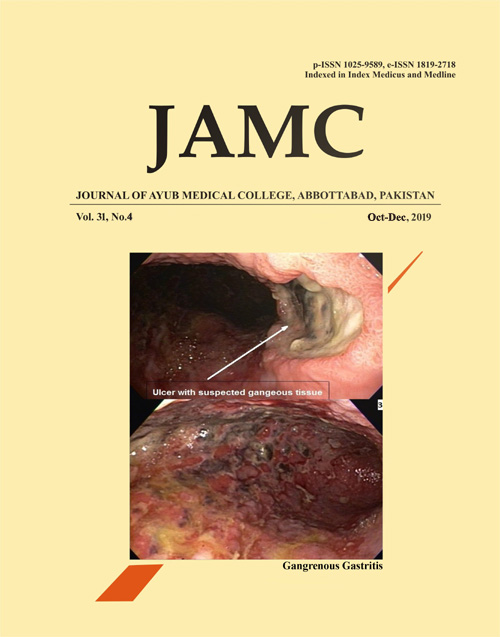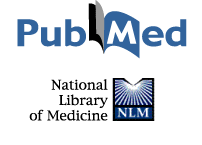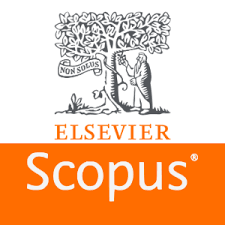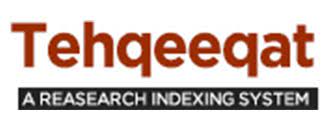THYROTOXIC PERIODIC PARALYSIS
Abstract
Thyrotoxic periodic paralysis is an uncommon disorder characterized by hypokalaemia, thyrotoxicosis and paralysis, most commonly seen in South Asian males. Aim of our case series is to highlight the significance of this reversible cause of patients presenting with neuromuscular paralysis. We present case series of 1 Asian and three Caucasian patients with thyrotoxic periodic paralysis who came with neuromuscular weakness secondary to thyrotoxicosis. All made a swift and uneventful recovery with no recurrence. Thyrotoxic periodic paralysis (TPP) is an infrequent condition having recurrent episodes of muscle weakness as main feature. Hypokalaemia is a common finding seen in these patients. Resolution of the attacks is achieved with correction of hypokalaemia and hyperthyroidism.
Keywords: Hyperthyroidism; Thyrotoxic periodic paralysis; Hypokalaemia; ParaparesisReferences
Lam L, Nair RJ, Tingle L. Thyrotoxic periodic paralysis. Proc (Bayl Univ Med Cent) 2006;19(2):126-9.
Lin SH, Huang CL. Mechanism of thyrotoxic periodic paralysis. J Am Soc Nephrol 2012;23(6):985-8.
Ali Chaudhry M, Wayangankar S. Thyrotoxic Periodic Paralysis: A Concise Review of the Literature. Curr Rheumatol Rev 2016;12(3):190-4.
Ahlawat SK, Sachdev A. Hypokalaemic paralysis. Postgrad Med J 1999;75(882):193-7.
Liu YC, Tsai WS, Chau T, Lin SH. Acute hypercapnic respiratory failure due to thyrotoxic periodic paralysis. Am J Med Sci 2004;327(5):264-7.
Lichtstein DM, Arteaga RB. Rhabdomyolysis associated with hyperthyroidism. Am J Med Sci 2006;332(2):103-5.
Magsino CH Jr, Ryan AJ Jr. Thyrotoxic periodic paralysis. South Med J 2000;93(10):996-1003.
Kornø MR, Hagen C. Hypokalemic thyrotoxic periodic paralysis--a rare differential diagnosis in patients presenting acute tetraparesis. Ugeskr Laeger 2008;170(39):3070.
Siddiqui FA, Sheikh A. Muscle paralysis in thyrotoxicosis. BMJ Case Rep 2015;2015:bcr2014207945.
Venance SL, Cannon SC, Fialho D, Fontaine B, Hanna MG, Ptacek LJ, et al. The primary periodic paralyses: diagnosis, pathogenesis and treatment. Brain 2005;129(Pt 1):8-17.
Downloads
Published
How to Cite
Issue
Section
License
Journal of Ayub Medical College, Abbottabad is an OPEN ACCESS JOURNAL which means that all content is FREELY available without charge to all users whether registered with the journal or not. The work published by J Ayub Med Coll Abbottabad is licensed and distributed under the creative commons License CC BY ND Attribution-NoDerivs. Material printed in this journal is OPEN to access, and are FREE for use in academic and research work with proper citation. J Ayub Med Coll Abbottabad accepts only original material for publication with the understanding that except for abstracts, no part of the data has been published or will be submitted for publication elsewhere before appearing in J Ayub Med Coll Abbottabad. The Editorial Board of J Ayub Med Coll Abbottabad makes every effort to ensure the accuracy and authenticity of material printed in J Ayub Med Coll Abbottabad. However, conclusions and statements expressed are views of the authors and do not reflect the opinion/policy of J Ayub Med Coll Abbottabad or the Editorial Board.
USERS are allowed to read, download, copy, distribute, print, search, or link to the full texts of the articles, or use them for any other lawful purpose, without asking prior permission from the publisher or the author. This is in accordance with the BOAI definition of open access.
AUTHORS retain the rights of free downloading/unlimited e-print of full text and sharing/disseminating the article without any restriction, by any means including twitter, scholarly collaboration networks such as ResearchGate, Academia.eu, and social media sites such as Twitter, LinkedIn, Google Scholar and any other professional or academic networking site.










